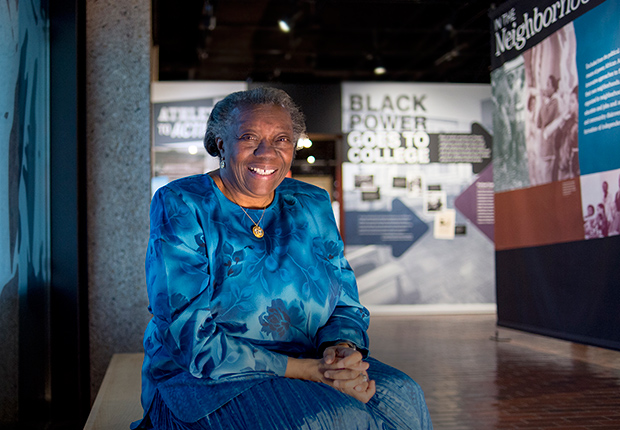AARP Hearing Center

By Lynne Terry
Geneva Craig had just crossed the bridge in Selma, Ala., when police charged the largely African American crowd of civil rights marchers. They swung whips and billy clubs, some wrapped in barbed wire. The marchers knew they’d face force that day. They didn’t care. They were marching for their voting rights.
“I expected to die that day.”
Craig was among 600 marchers on March 7, 1965, a day called “Bloody Sunday” because so many people were beaten.
She was a teen then and active in the civil rights movement. Now a member of AARP Oregon’s Executive Council, Craig will share her experiences at a talk at 10:30 a.m. on Tuesday, May 22, at the Oregon Historical Society, 1200 SW Park Ave., Portland. Museum admission will be free for AARP members that day, encouraging them to see the society’s exhibit on Oregon’s civil rights movement.
The state’s civil rights history, unlike Alabama’s, is little known. The Historical Society hopes to change that.
“A lot of folks think because Oregon is so progressive now that we’ve always been that way,” said the society’s executive director, Kerry Tymchuk. “The truth is that we haven’t.”
Oregon’s Constitution, approved in 1857, originally banned blacks from living in the state. But in the 1920s and ’30s, African Americans moved to Oregon to serve as porters and baggage carriers on the railroad. Another influx came during World War II when workers were needed to work in the North Portland shipyards.
Judy Boyer’s father, who was from Texas, found work at the North Portland shipyards in 1944. The family later bought a home in the Albina district in Northeast Portland, where 80 percent of the city’s blacks (about 12,500 people) lived.
Real estate agents kept them there with a practice called redlining that blocked African Americans from buying in white areas, Tymchuk said.
Some people considered Albina, an area of 3.4 square miles, a ghetto. But Boyer, 68, president of the North/Northeast Portland AARP chapter, said her parents remembered it as “absolutely fantastic,” a vibrant community of black-owned businesses, including restaurants, nightclubs, and insurance and real estate offices.
By the 1960s, many African Americans in Portland and elsewhere began to protest. In 1963 the NAACP demonstrated in front of City Hall for equal housing. Young blacks in Albina clashed with police in 1967 and 1969, resulting in widespread damage and dozens of arrests. In 1970 the Black Panthers rallied for equal rights in front of the federal courthouse downtown.
The exhibit, running until June 24, highlights trailblazers like William McCoy, the first black man elected to the Legislature, in 1972, and Charles Jordan, who in 1974 became Portland’s first African American city commissioner.
Segregation was not as overt as it was in the South, but it still existed in 1978 when Willie Richardson moved with her family to Salem from South Carolina. “There may not have been a sign saying ‘No blacks allowed,’ but you weren’t welcome,” said Richardson, 69, president of the Oregon Black Pioneers.
The Salem-based nonprofit organization created the exhibit to share information about the state’s civil rights movement.
Issues still linger, Richardson said. Tensions with the police can run high and gentrification has pushed minorities out of North and Northeast Portland.
“There are issues that have resurfaced again that we thought were settled with the civil rights movement,” Richardson said. “They’re not settled. They’re back in place.”
The free day for AARP members is a way to learn about a part of Oregon’s past that’s not well known outside African American circles.
“It’s important to document and share these stories because they’re a vital part of the American experience,” said AARP Oregon spokeswoman Joyce DeMonnin.
Lynne Terry is a writer living in Portland, Ore.































































